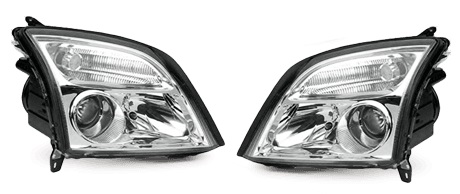Collaborating Post
Using Headlamps for Protection Preventing Animal Accidents on the Road
Published : 27 Jul 2023, 14:06
Updated : 31 Jul 2023, 19:15
Introduction
Driving at night can be exciting, but it also presents a number of difficulties, particularly when it comes to interactions with animals on the road. Although headlamps have always been a necessary component of a car, their value extends beyond simple illumination. In this article, we'll look at the role headlights play in reducing animal accidents on the road, offer advice on how to drive so as to avoid hitting animals, and investigate lighting innovation's potential for improving animal welfare.
How Important Are Headlights?
For safe driving, especially at night and inclement weather, headlights are essential. They make the car visible to other drivers and let the driver see the road ahead. Good headlights can make a significant difference in minimizing animal collisions by alerting animals to oncoming cars and providing drivers more time to react.
How Many Accidents Are Caused by Headlights?
Animals are involved in headlight-related incidents more frequently than one may imagine. Recent data indicates that a sizable portion of animal-related traffic incidents take place at night. Inadequate headlights that fail to offer appropriate illumination and visibility are to blame for a large number of these collisions.
What to Do When an Animal Is in the Road?
It can be frightening to come across an animal on the road, but it's important to keep your cool and abide by some rules. First off, never swerve hastily or panic to avoid hitting the animal because this can cause more serious accidents. As an alternative, go more slowly and beep your horn to warn the animal and give it time to get out of the way of the road.
Rules to Follow to Avoid Accidents
It's critical to abide by a few guiding principles when driving in order to reduce the likelihood of animal accidents:
Respect Speed Limits: Driving within the allowed speeds enables you to respond swiftly to unforeseen circumstances, such as the sudden presence of animals on the road.
Watch Out: Drive cautiously, especially in regions where wildlife activity is known to be high. Keep an eye out for any potential animal movement along the edges of the road.
Don't Overuse High Beams: When there is no oncoming traffic, increase your visibility by using high beams. When you see an animal, however, turn to low beams because high beams could blind or confuse it.
The Most Effective Way of Avoiding a Collision
The easiest approach to prevent hitting an animal is to purchase high-tech lighting equipment made specifically for this reason. Animal-sensitive lighting has been created thanks to advancements in headlight bulbs. These intelligent headlights have the ability to recognise nearby animals and change their brightness or beam pattern to avoid blinding them while still providing the driver with appropriate lighting.
Tips to Avoid Collisions with Animals While Driving
Here are some further suggestions to lower the possibility of animal accidents in addition to having headlights that are sensitive to animals:
Drive less at dawn and dusk: The likelihood of seeing animals on the road rises at these times since many animals are more active.
Consider Road Signs: Keep an eye out for warning signs that indicate regions where there is a lot of wildlife activity, and alter your driving style accordingly.
In rural areas, be alert: Be especially cautious in rural areas as wildlife is more prevalent close to forests, fields, and water sources.
The Future of Car Headlights: Animal Welfare Innovation
The emphasis on animal welfare in the automotive business grows along with technology. Researchers and manufacturers are actively working on incorporating cutting-edge technologies to safeguard both drivers and animals, which bodes well for the future of automobile headlights. Intelligent headlamp systems with enormous potential for reducing collisions are currently being developed. These systems employ infrared cameras and sensors to identify animals and alter lights accordingly.
Conclusion
Headlamps are essential for guaranteeing road safety for both drivers and animals. It's crucial to accept technological innovations that put animal welfare first as we work to coexist with wildlife while traveling. We can greatly reduce accidents caused by animals by adhering to important driving rules and spending money on smart headlight technology. This would make the environment safer for everyone.
FAQs
What are headlights that detect animals?
Advanced headlamp systems with sensors and other technologies are known as "animal-sensitive headlights." These headlamps can detect animals on the road and change their lighting to prevent dazzling or alarming them.
Are there any animal-sensitive headlights on the market?
It's true that several automakers already provide cars with animal-sensitive headlight technology.
Can all incidents involving animals be avoided using animal-sensitive headlights?
Drivers must still use caution and drive safely to avoid crashes even though animal-sensitive lighting can drastically lower the chance of mishaps.


